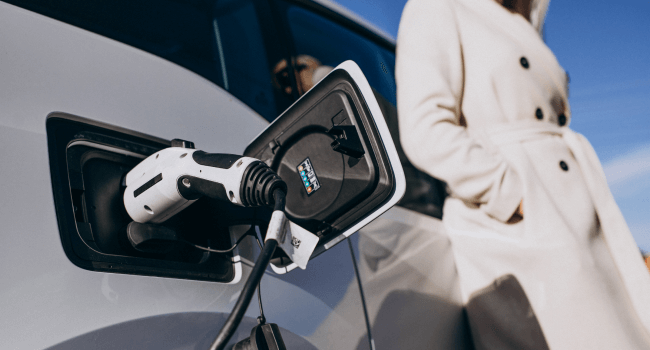As hybrid vehicles gain popularity, understanding the intricacies of their functioning becomes essential for drivers. This article aims to demystify the processes of regenerative braking and hybrid car charging, shedding light on how these systems contribute to the peak efficiency of your vehicle.
Exploring Regenerative Brakes
What Are Regenerative Brakes and How Do They Operate?
Regenerative brakes, employed in hybrid and electric vehicles, represent a distinct braking system. In traditional gasoline or diesel cars, brakes convert kinetic energy into heat to stop the vehicle.
In a hybrid, the electric motor (or sometimes the fuel motor and transmission) propels the car, and regenerative braking captures kinetic energy, transforming it into electrical energy to charge the battery.
When the brake pedal is pressed, the regenerative braking system engages, aiding in slowing down the car. As the car decelerates, a small generator connected to the wheels produces electricity, which is then stored in the battery. This process significantly enhances fuel efficiency by reducing the workload on the car’s engine.

Sensations of Regenerative Braking While Driving
Drivers of hybrid or electric cars with regenerative brakes may notice subtle differences in the brake pedal’s feel. The regenerative braking system introduces a slight resistance and a firmer pedal sensation as it actively contributes to slowing down the vehicle and generating electricity.
Identifying Hybrid Vehicles with Regenerative Braking
Most electric cars, plug-in hybrids, and some regular hybrids integrate regenerative braking systems. Popular models equipped with this technology include:
- Toyota Prius
- Honda Insight
- Ford Fusion Hybrid
- Chevrolet Volt
- Chevrolet Bolt
- Kia Sorento Hybrid
- Nissan Leaf
- All Teslas
- Toyota RAV4 Prime
- Chrysler Pacifica Hybrid
Pros and Cons of Regenerative Braking Systems
Pros:
- Improved Fuel Efficiency:
- Generates electricity while braking, reducing the reliance on fuel.
- Reduced Brake Wear:
- Decreases wear on traditional brakes, extending their lifespan and reducing maintenance costs.
- Longer Battery Life:
- Helps maintain battery charge, potentially prolonging its overall life.
- Extended Driving Range:
- Allows for the possibility of covering more distance on a single charge.
Cons:
- Less Control in an Emergency:
- Engagement during emergency braking may reduce driver control.
- Longer Braking Distance:
- May take more time to slow down the car compared to traditional brakes.
- Not As Beneficial At Lower Speeds:
- Effectiveness diminishes at lower speeds, impacting benefits in city traffic.
- Altered Brake Pedal Feel:
- The brake pedal may feel different, requiring drivers to adapt to the new sensation.

Deciphering Hybrid Car Charging
Understanding How Hybrid Car Charging Works
Regular hybrid vehicles are charged by the engine and regenerative braking, requiring no additional steps for charging. On the other hand, plug-in hybrids and electric cars necessitate regular charging.
Charging these vehicles resembles the process of charging a smartphone or laptop. Plug the charger into an outlet and then into your car. The Level 1 charger, included with most vehicles, plugs into a standard 120-volt outlet. Level 2 chargers, requiring a 240-volt outlet, provide faster charging and are commonly found in laundry rooms.
Charging times can span a few hours, making overnight charging a practical choice for many users.
Conclusion
In summary, comprehending the dynamics of regenerative braking and hybrid car charging contributes to maximizing your vehicle’s efficiency. As these technologies become increasingly prevalent, drivers benefit from a comprehensive understanding of their advantages and potential considerations.
Frequently Asked Questions (FAQs)
1. How much does it cost to charge a plug-in hybrid or electric car?
The cost of charging a plug-in hybrid or electric car varies based on factors such as the specific car model, charger type, and electricity rates. Typically, charging expenses range between $10 and $30.
2. How long does it take to charge a plug-in hybrid or electric car?
Charging duration depends on the car and charger type. A Level 1 charger may take 8-10 hours, while a Level 2 charger can accomplish charging in 3-4 hours.
3. Can I charge my car with a solar panel?
Yes, it is possible to charge your car using a solar panel. Solar panels can provide the necessary power for both Level 1 and Level 2 chargers.
4. What are the disadvantages of regenerative braking?
Regenerative braking has some drawbacks, including reduced control in emergency situations, longer braking distances, and less effectiveness at lower speeds.
5. Do I need to charge a Toyota Prius?
No, charging is not necessary for a standard Toyota Prius unless it is a plug-in model. The non-plug-in Prius relies on the engine and regenerative braking for charging. Only plug-in hybrids and fully electric vehicles require external charging.


